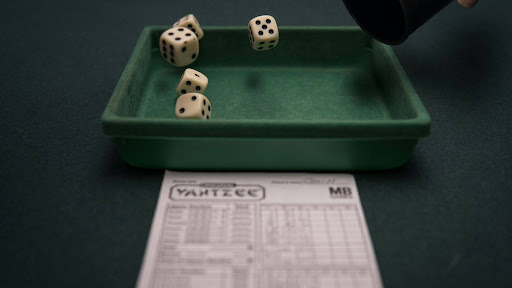When you first start looking at sports betting sites, you might notice that the odds can be presented in a few different ways. The most common formats you’ll run into are fractional, decimal, and moneyline odds. Each one tells you pretty much the same thing – how much you could win based on your bet – but they look and work a little differently. It’s good to know what they all mean, especially if you’re used to one type and then see another.
Understanding Fractional Odds vs Decimal & Moneyline Formats
Fractional odds, often called ‘British’ or ‘UK’ odds, are what you’ll see written out like 5/1 or 3/2. The number on top is how much you win, and the number on the bottom is what you have to bet to win that amount. So, 5/1 means for every $1 you bet, you win $5. If you bet $2, you’d win $10. Your original bet is also returned to you if you win, so a $1 bet at 5/1 actually returns $6 total ($5 profit + $1 stake).
Decimal odds, on the other hand, are just a single number, like 6.00 or 2.50. This format is really popular pretty much everywhere outside of the US and UK. With decimal odds, the number shows you the total amount you get back for every $1 you bet, including your stake. So, 6.00 odds means a $1 bet returns $6 total ($5 profit + $1 stake). It’s pretty straightforward to calculate your total payout. Many people find these easier to work with for quick calculations.
Moneyline odds, common in the US and Canada, use plus (+) and minus (-) signs. A minus sign indicates the favorite, showing how much you need to bet to win $100 (e.g., -200 means you bet $200 to win $100). A plus sign shows the underdog, indicating how much you win for every $100 bet (e.g., +150 means you bet $100 to win $150). These are focused on who wins the game outright.
Here’s a quick look at how they compare:
| Odds Type | Example | Profit for $10 Bet | Total Return for $10 Bet |
| Fractional | 5/1 | $50 | $60 |
| Decimal | 6.00 | $50 | $60 |
| Moneyline | +500 | $50 | $60 |
Understanding these different formats is key because not all betting sites will show odds the way you’re used to. Being able to switch between them in your head, or knowing where to find an odds converter, can save you confusion and help you make better betting decisions.
It’s worth noting that while fractional odds are traditional, many sites are moving towards decimal odds because they can be simpler for new bettors to grasp. You can often find tools to convert between formats, which is super helpful when you’re comparing betting options across different platforms.
Why Some Betting Sites Don’t Offer Fractional Odds by Default
You might be wondering why some betting sites seem to hide the fractional odds format, or don’t even show it at all. It’s not usually some big conspiracy, but more about who they’re trying to reach and where they operate. Think about it, in the United States, moneyline odds are king. Most American bettors are used to seeing a plus or minus sign next to a number, like +150 or -200. It’s what they understand, and sportsbooks want to make things easy for their main audience. Fractional odds, while popular in places like the UK and Ireland, just aren’t as familiar to a lot of US customers. So, to keep things simple and avoid confusing their primary user base, many sites default to decimal or moneyline formats.
It also has a lot to do with regulations and the markets they’re targeting. Some regions have specific rules about how odds should be displayed, and decimal odds are often seen as more straightforward globally. This can be a big factor for international betting sites that want to cater to a wide range of customers across different countries. They might choose a format that’s universally understood or legally required in key markets.
The choice of odds format often comes down to a business decision aimed at appealing to the largest or most profitable customer base in a given region.
Here’s a quick breakdown of why you might see other formats more often:
- Target Audience: Sites primarily serving the US market will lean towards moneyline odds because that’s the standard there. It’s about meeting customers where they are.
- Global Reach: International sites might prefer decimal odds because they are widely used across Europe and other parts of the world, making them a good default for a diverse clientele.
- Simplicity: Decimal odds are often considered easier to calculate potential payouts with, which can be appealing for newer bettors or those who prefer a glance at their potential return. This is why you might see them used more often on betting exchanges.
- Regulatory Preferences: In some jurisdictions, there might be a preference or even a requirement for odds to be displayed in a particular format, often favoring clarity and ease of understanding for all users.
Geographic & Regulatory Constraints on Fractional Odds Display
It’s not always about what a betting site wants to show; sometimes, it’s about what they can show. Different countries have different rules about how betting odds need to be presented. In some places, regulators might mandate that only certain odds formats are displayed to make things clearer for local bettors. This is especially true in markets where one odds format is historically dominant or where consumer protection laws are very strict.
Think about it: if a country’s betting culture has always used decimal odds, for instance, a sportsbook operating there might default to that format. They might even be legally required to do so. This isn’t about hiding anything; it’s about complying with local laws and catering to the established preferences of the player base. Trying to force a different format could lead to confusion or even legal trouble.
Here’s a quick look at how this can play out:
- United Kingdom: Fractional odds are very common and often the default, reflecting historical usage.
- United States: American odds are the standard, with plus (+) and minus (-) signs indicating favorites and underdogs.
- Europe & Australia: Decimal odds are widely used, offering a straightforward calculation of total payout.
The choice of odds format can be heavily influenced by the primary market a betting operator is targeting. What’s standard in one region might be unusual or even prohibited in another, leading to variations in how odds are displayed across different platforms or even on the same platform if it serves multiple jurisdictions.
So, if you’re in a region where fractional odds aren’t the norm, you might find they’re not readily available. It’s a matter of fitting into the local betting landscape and adhering to the rules of the road.
User Interface & Settings: How to Enable Fractional Odds If Available
Sometimes, the odds format you’re used to just isn’t showing up on your favorite betting site. Don’t panic just yet! Many platforms allow you to switch between different odds displays, and fractional odds might just be hidden in the settings. It’s usually a pretty straightforward process, though the exact steps can vary a bit from one site to another.
Most betting sites will have a general settings or preferences menu. You’ll want to look for an option related to ‘Odds Format’, ‘Betting Preferences’, or something similar. Once you find it, you should see a list of available formats, which typically includes Decimal, American (Moneyline), and, if the site supports it, Fractional. Simply select ‘Fractional’ from the list, and the site should update to display all odds in that format.
Here’s a general idea of where to look:
- Account Settings: Often found by clicking on your username or profile icon.
- General Preferences: Sometimes, a separate tab within your account settings.
- Betting Slip/Page: Less common, but some sites might have a quick toggle directly on the main betting page.
If you’re having trouble locating the setting, a quick look at the site’s FAQ or help section is usually your best bet. They often have guides on how to customize your user experience. It’s worth noting that some sites, particularly those operating in regions where fractional odds aren’t the standard, might not offer the option at all. In those cases, you might need to use an online converter to figure out what the odds mean to you.
Conversion Challenges & Accuracy Concerns with Fractional Odds

Sometimes, when you’re trying to figure out what odds mean, things can get a little fuzzy, especially when you’re trying to switch between different formats. Fractional odds, like 7/2, are pretty common in some places, but they can be a bit tricky to work with if you’re used to decimal odds, which look like 3.50. It’s not just about how they look; it’s about how you calculate potential winnings. With fractional odds, the first number is your profit for every amount of the second number you bet. So, 7/2 means you win $7 for every $2 you bet. That’s straightforward enough, but then you have to remember to add your original stake back to get the total return. Decimal odds, on the other hand, just give you the total amount you get back, stake included. A $10 bet at 3.50 decimal odds returns $35 total ($25 profit plus your $10 stake). It’s a small difference, but it can lead to confusion if you’re not paying close attention.
Another point of confusion can be implied probability. While you can calculate it for any odds format, the formulas differ. For fractional odds like 7/2, you’d calculate the probability as 2 / (7 + 2), which is about 22.2%. For decimal odds of 3.50, it’s 1 / 3.50, which is also about 28.6%. Wait, that doesn’t match! Ah, the decimal odds of 3.50 actually represent a total return, not just profit. So, if you bet $1 and win at 3.50, you get $3.50 back. The profit is $2.50. To compare this to fractional odds, you’d look at the profit. A 7/2 fractional odd means $7 profit for a $2 bet, or $3.50 profit for a $1 bet. The implied probability for 7/2 is 2 / (7+2) = 22.2%. The implied probability for decimal odds of 3.50 (which means $2.50 profit on a $1 bet) is calculated as 1 / 3.50 = 28.6%. This is where things get really messy. The decimal odds of 3.50 actually correspond to fractional odds of 5/2 (meaning $5 profit for every $2 bet, or $2.50 profit for every $1 bet). So, a 7/2 fractional odd is not the same as 3.50 decimal odds. It’s easy to see how mistakes can happen when you’re trying to convert between them on the fly, especially when you’re looking at long odds, like 800-to-1.
Here’s a quick look at how the implied probability calculation differs:
- Fractional Odds (e.g., 7/2): Implied Probability = Denominator / (Numerator + Denominator)
- For 7/2: 2 / (7 + 2) = 2 / 9 ≈ 22.2%
- Decimal Odds (e.g., 3.50): Implied Probability = 1 / Decimal Odds
- For 3.50: 1 / 3.50 ≈ 28.6%
The core issue is that fractional odds directly represent profit relative to stake, while decimal odds represent the total return. This fundamental difference in what the numbers signify requires careful attention during conversion to avoid misinterpreting potential payouts or the true likelihood of an event occurring.
This kind of mix-up can lead to betting on the wrong outcome or misjudging the value of a bet. It’s why some betting sites might stick to one format or make it very clear which format they are using. If you’re not careful, you might think you’re getting one price when you’re actually getting another, which can really impact your winnings over time.
Bookmaker Strategy & Profit Margins Behind Hidden Formats

Bookmakers, like any business, need to make money. The way odds are presented can sometimes be a subtle part of their strategy to manage profit margins. While fractional odds are traditional in some regions, many sites lean towards decimal or American formats. This isn’t always about user preference; it can be about how these formats communicate risk and reward, and ultimately, how they influence betting behavior.
The core of a bookmaker’s profit comes from the ‘vig’ or ‘juice,’ which is essentially a built-in commission on every bet. This means that the implied probabilities of all possible outcomes in an event add up to more than 100%. For instance, if the total implied probability sums to 110%, the bookmaker has a 10% ‘hold’ or profit margin baked into those odds. Different odds formats can make this margin more or less obvious to the bettor.
Consider how different formats might obscure or highlight this house edge:
- Decimal Odds: These are often seen as more transparent because the total payout (including your stake) is clearly displayed. A bettor can more easily calculate the implied probability and thus the bookmaker’s margin.
- American Odds: These can be confusing, especially with negative numbers for favorites. While they clearly show the amount you need to wager to win $100, the implied probability calculation can be less intuitive for some.
- Fractional Odds: While familiar to many, the way they represent profit separate from the stake can sometimes make quick margin calculations a bit more involved compared to decimals.
It’s worth noting that some bookmakers might favor formats that are less commonly understood by a particular audience, potentially leading to less savvy bets. This is not to say they are intentionally misleading, but rather that the presentation of odds can play a role in how bettors perceive value. For example, a bettor accustomed to fractional odds might find decimal odds easier to work with when comparing prices across different football betting markets.
The underlying principle for any odds format is that they represent not just the potential payout, but also the bookmaker’s assessment of probability, adjusted to include their profit. Understanding this allows you to see beyond the numbers and evaluate the true value of a bet.
Ultimately, the choice of odds format can be a strategic decision for bookmakers, influencing how bettors interact with their platform and perceive the odds offered. While the goal is always to provide competitive pricing, ensuring profitability is paramount.
How to Convert Other Odds Types to Fractional Odds Yourself
Sometimes, you might encounter betting odds presented in formats other than the familiar fractions, like decimal or American (moneyline) odds. Don’t worry, converting these to fractional odds is quite manageable once you know the simple formulas. This way, you can always see the odds in the format you prefer.
Understanding the Conversion Process
The core idea behind converting odds is to understand the implied probability and potential payout. Each format represents this information slightly differently, but the underlying math is consistent.
Here’s a breakdown of how to convert from other common formats to fractional odds:
- Decimal Odds to Fractional Odds:
To convert decimal odds to fractional odds, subtract 1 from the decimal number. Then, express the result as a fraction. For example, if the decimal odds are 3.50, subtract 1 to get 2.50. To make this a fraction, you can write it as 250/100, which simplifies to 5/2. So, 3.50 decimal odds are equivalent to 5/2 fractional odds. - American (Moneyline) Odds to Fractional Odds:
It’s helpful to remember that fractional odds directly show your profit relative to your stake. For instance, 5/2 means you win $5 for every $2 you bet. The total payout would be your profit plus your original stake.
Converting odds can seem a bit daunting at first, but with a little practice, it becomes second nature. It’s a useful skill to have, especially when comparing offers across different betting sites or when you’re used to a specific format.
Here’s a quick reference table for common conversions:
| Decimal Odds | American Odds | Fractional Odds |
| 2.00 | +100 | 1/1 |
| 3.00 | +200 | 2/1 |
| 1.50 | -200 | 1/2 |
| 4.50 | +350 | 7/2 |
Being able to perform these conversions yourself means you’re not reliant on the betting site’s display settings. You can always get a clear picture of the odds, no matter how they’re presented. If you’re looking for a tool to help with these calculations, an odds converter tool can be quite handy.
What You Can Do If You Still Ask: Why Can’t I Find Fractional Odds on Betting Sites?
So, you’ve looked around and still can’t find those familiar fractional odds. It can be a bit frustrating, especially if that’s how you’ve always done things. Don’t sweat it too much, though. There are a few things you can try.
First off, check your account settings. Many betting sites, even if they default to decimal or American odds, have a hidden gem: a setting to switch your preferred format. It’s usually tucked away in your profile or account preferences. Look for something like ‘Odds Display,’ ‘Betting Format,’ or ‘Preferences.’
If you’re still coming up empty, don’t be afraid to reach out to customer support. They can tell you definitively if fractional odds are an option and, if so, how to enable them. Sometimes, it’s just a matter of asking.
Here’s a quick rundown of what to do:
- Scour your account settings: Look for options related to odds display or betting format.
- Contact customer support: They’re there to help and can provide specific instructions.
- Consider using an odds converter: If the site doesn’t offer fractional odds, you can easily convert decimal or American odds yourself.
Remember, the goal is to bet comfortably and confidently. If fractional odds help you do that, it’s worth a little effort to find them or a way to use them.
If all else fails and the site simply doesn’t support fractional odds, you might need to get comfortable with another format or find a different betting platform. It’s not ideal, but sometimes that’s just how it is. You can always use an online odds converter tool to switch between formats. For example, if you see decimal odds of 3.50, that’s the same as 5/2 in fractional odds. A quick search for ‘odds converter’ will bring up plenty of free options.
Still wondering why you can’t find fractional odds on betting sites? It’s a common question, and we’ve got the answers. Dive deeper into the world of betting odds and discover why some formats are more popular than others. For a full breakdown and more insights, visit our website today!
Frequently Asked Questions
What are fractional odds, and how do they work?
Fractional odds, also known as British or traditional odds, are shown as a fraction, like 5/1. This means for every $1 you bet, you could win $5 in profit, plus get your original $1 back. The number on the left shows your potential winnings, and the number on the right shows the amount you need to bet to get those winnings. For example, 5/1 means you win $5 for every $1 bet. If the first number is smaller, like 1/2, it means you win $1 for every $2 bet, and the event is more likely to happen.
Why don’t all betting sites show fractional odds?
Some betting sites, especially those popular in the United States, tend to use other formats like decimal or moneyline odds because they are more common in those regions. Also, some sites might choose to simplify their display by sticking to one or two main formats. Regulations in certain areas might also influence which odds formats are shown.
How can I switch to fractional odds if my betting site offers them?
Many online betting sites allow you to choose your preferred odds format. Look for a ‘Settings,’ ‘Preferences,’ or ‘Account’ section on the website or app. Within these settings, you should find an option to change the odds display from decimal or American to fractional. If you can’t find it, check the site’s help or FAQ section for instructions.
What is the difference between fractional and decimal odds?
Fractional odds show your profit relative to your stake (e.g., 5/1 means $5 profit for every $1 bet). Decimal odds show the total amount you’ll get back for every $1 bet, including your stake (e.g., 6.00 means you get $6 back for every $1 bet, which is $1 stake + $5 profit). Decimal odds are often seen as simpler for calculating total returns, while fractional odds clearly show the profit amount.
Can I convert decimal or moneyline odds to fractional odds myself?
Yes, you can convert odds between different formats. For example, to convert decimal odds to fractional, you can subtract 1 from the decimal number and then simplify the resulting fraction. For moneyline odds, specific formulas depend on whether the odds are positive or negative. Many online tools called ‘odds converters’ can do this quickly for you.
Are fractional odds better or more accurate than other types?
No single odds format is inherently ‘better’ or more accurate than another. They are just different ways of showing the same probabilities and potential payouts. Fractional odds are traditional and clear about profit, decimal odds are straightforward for total returns, and moneyline odds are standard in the US. The best format is the one you understand most easily.
Daniel Chase is a seasoned casino analyst and iGaming writer with over 10 years of experience in the online gambling industry. He specializes in game strategy, casino odds, and player-focused reviews. Daniel is passionate about helping players make smarter decisions through transparency, real data, and honest insight.











